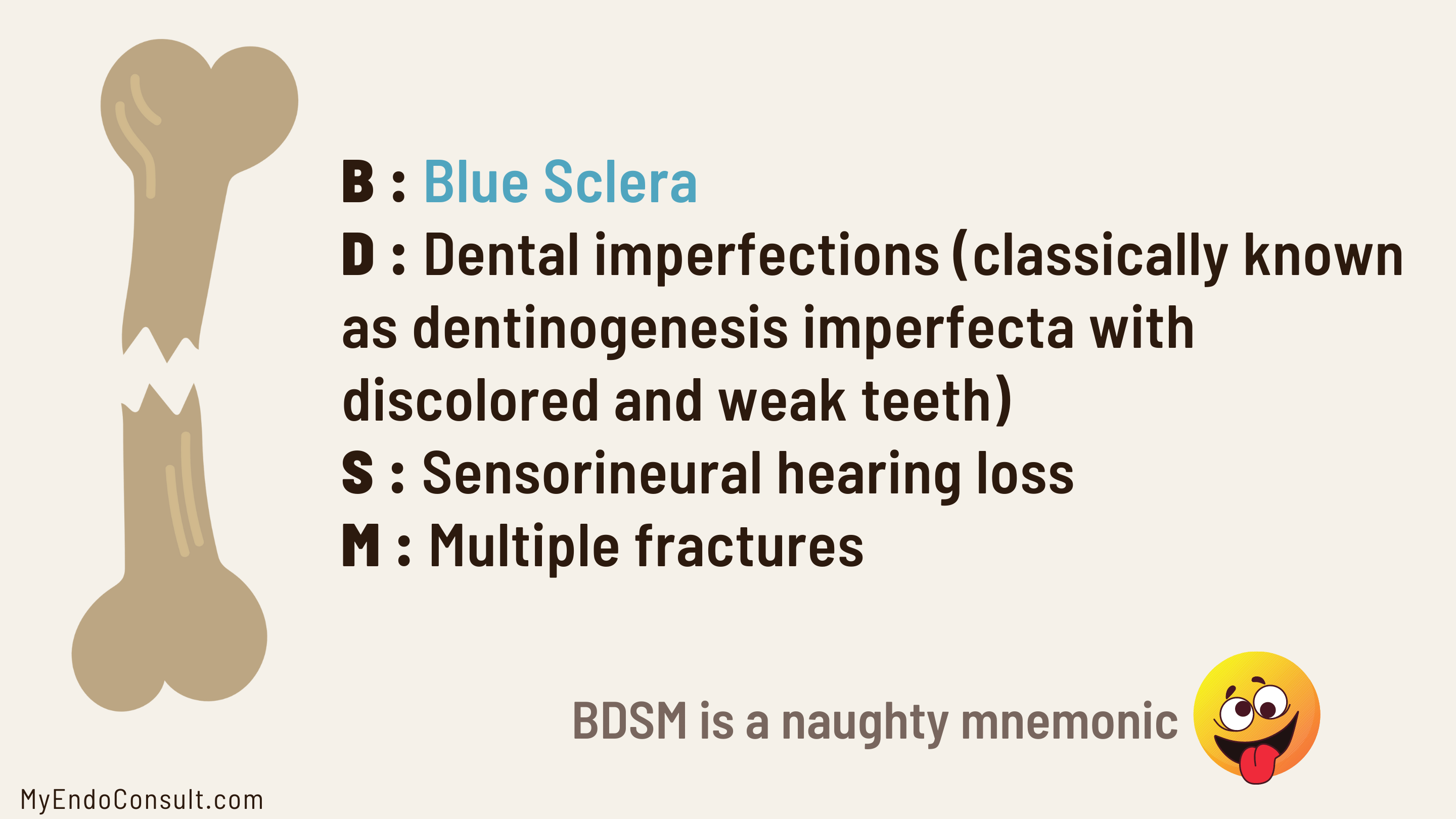Osteogenesis imperfecta (OI) is a genetic disorder that results in fragile bones. There are a number of mnemonics that can be used to remember the causes and clinical features of osteogenesis imperfecta, also known as brittle bone disease.
Introduction
OI is caused by autosomal dominant mutations in type I collagen genes (COL1A1 and COL1A2) in up to 85% of affected individuals. The initial classification systems proposed by Sillence et al has been further complicated by the discovery of additional genetic aberrations in type I collagen gene transcription, translation, and posttranslational modification. Therefore, a shift has been made from a mainly clinicopathophysiologic classification system to one based on genetics.
Mnemonics for OI
The skeletal features of this condition can be remembered using the mnemonic “FOG.” This stands for “frequent fractures,” “osteopenia,” and “growth retardation.” Patients with OI often experience multiple fractures, particularly during childhood. They may also have osteopenia, or reduced bone density, which can lead to an increased risk of fractures.
Growth retardation is another common feature of OI, and patients may be significantly shorter than average. In addition to these clinical features, patients with OI may also have blue sclerae, hearing loss, and joint deformities.
Another mnemonic for osteogenesis imperfecta is the somewhat controversial memory aid, BDSM 😊. These clinical features represent the classic phenotype of osteogenesis imperfecta.
- B : Blue Sclera
- D : Dental imperfections (classically known as dentinogenesis imperfecta with discolored and weak teeth)
- S : Sensorineural hearing loss
- M : Multiple fractures
Sillence types I through to IV are referred to as classic OI since these subtypes of OI involve autosomal dominant mutations in type I collagen (specifically COL1A1 and COL1A2)
| Sillence Type | Features | Mnemonic |
| Type I | Blue sclera, Sensorineural hearing loss. They have near normal stature | BS only |
| Type II | Lethal | |
| Type III | Progressively deforming | |
| Type IV | Dentinogenesis imperfecta, Multiple fractures (leading to short stature and bone deformities) | MD only |
Another variant of the cool BDSM mnemonic is BITE. Osteogenesis imperfecta BITE mnemonic outlines the four features of classic OI.
- B: Bones (referring to fragile bones)
- I: I (the blue sclera of the “eyes”)
- T: T (dentinogenesis imperfecta)
- E: E (involvement of the “ears” leads to hearing loss)
References
- Sillence DO, Senn A, Danks DM. Genetic heterogeneity in osteogenesis imperfecta. J Med Genet. 1979 Apr;16(2):101-16.
- Marini JC, Forlino A, Bächinger HP, Bishop NJ, Byers PH, Paepe A, Fassier F, Fratzl-Zelman N, Kozloff KM, Krakow D, Montpetit K, Semler O. Osteogenesis imperfecta. Nat Rev Dis Primers. 2017 Aug 18;3:17052.
Kindly Let Us Know If This Was helpful? Thank You!


